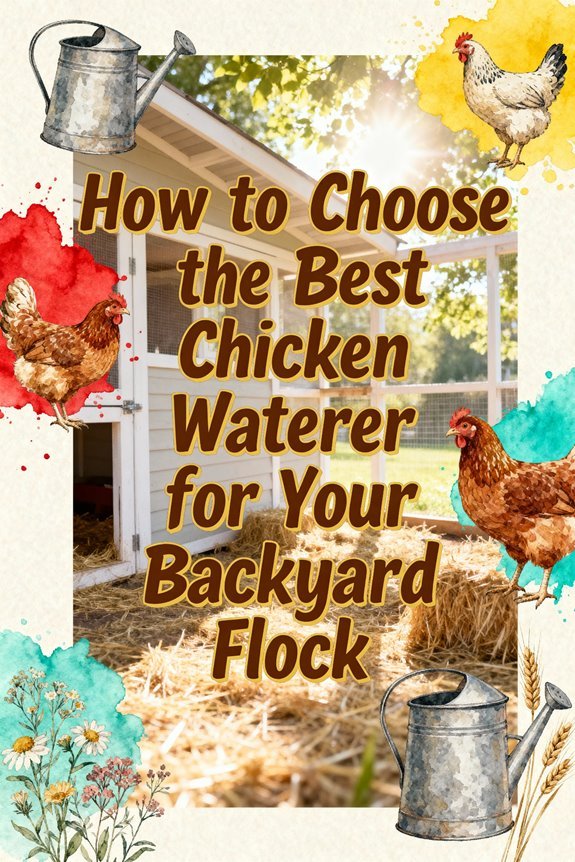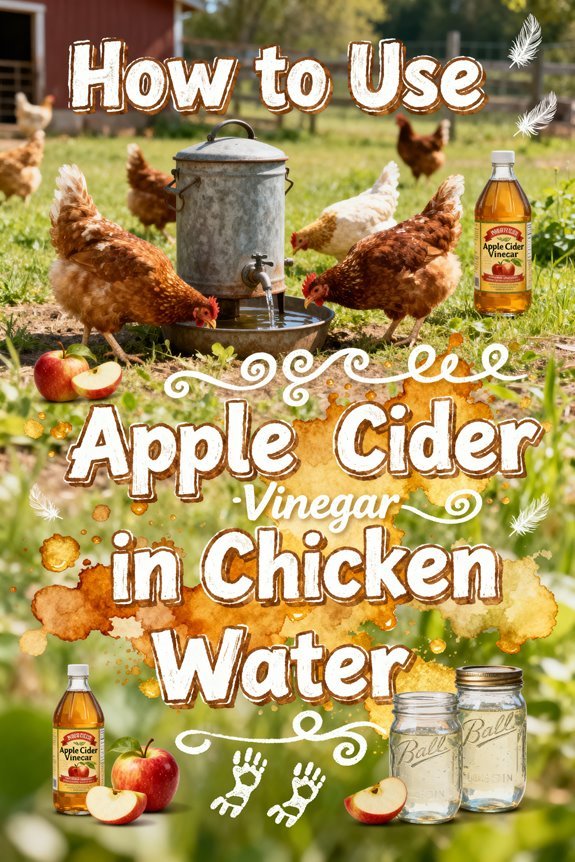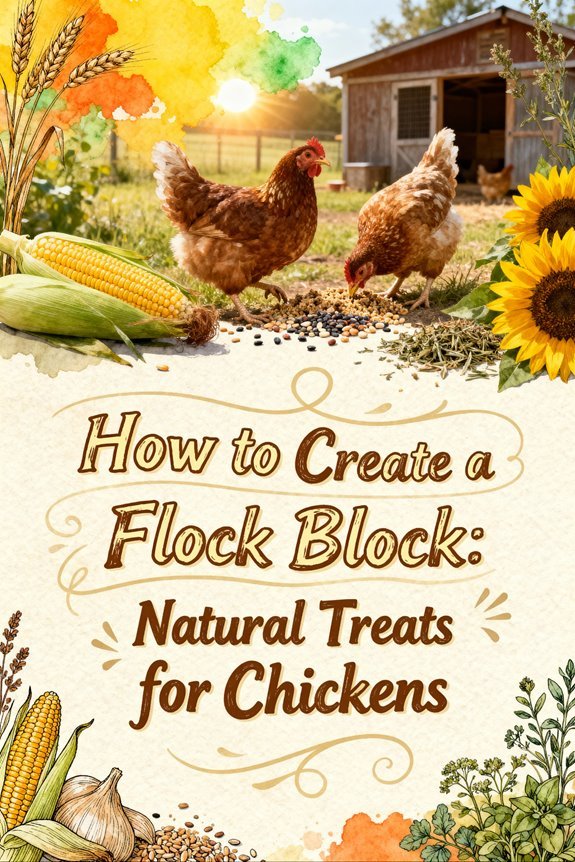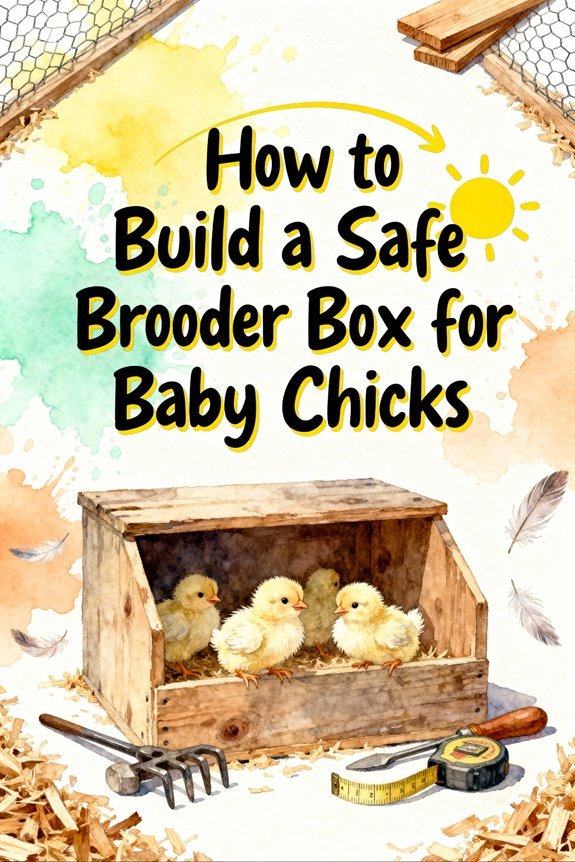How to Choose the Best Chicken Waterer for Your Backyard Flock
Choose your chicken waterer based on your flock size, climate, and maintenance preferences. For 8-12 chickens, select a 3-gallon waterer, while larger flocks need 5+ gallons with multiple access points. Consider gravity-fed or automatic systems, and choose between durable metal or affordable plastic models. You’ll want enclosed designs with smooth, cleanable surfaces positioned at shoulder height. Proper waterer selection impacts your flock’s health, hygiene, and long-term care success.
Understanding Different Types of Chicken Waterers
Several distinct types of chicken waterers are available to poultry keepers, each designed with specific features to meet different flock needs. Gravity waterers feature a globe-shaped reservoir that dispenses water into a drinking basin as levels drop, available in both plastic and metal options. While plastic versions are lighter and more affordable, metal variants offer superior durability despite potential rust concerns. The RentACoop Cup Waterer stands out for its versatile customization options that can adapt to various flock sizes and configurations.
Automatic waterers benefits include continuous water supply through nipples or cups connected directly to a water source, requiring minimal daily maintenance. DIY enthusiasts can create efficient systems using PVC pipe systems that incorporate nipple drinkers for clean, accessible water delivery. You’ll find hanging options that reduce contamination and ground-level solutions with adjustable heights. For specific requirements, specialized waterers accommodate chicks with shallow containers, while heated models prevent freezing in winter conditions. Each type offers unique advantages, from enhanced cleanliness to improved accessibility for your flock.
Essential Features to Look for in a Quality Waterer
When selecting a chicken waterer, specific key features determine its effectiveness and long-term value for your flock. Look for fully enclosed waterer designs with smooth, easy-to-clean surfaces and simple components. You’ll want elevated or hanging options that prevent ground contamination and incorporate effective spill prevention mechanisms. Nipple drinkers provide one of the most hygienic watering solutions for backyard flocks.
Choose waterers made from UV-resistant, durable materials that can withstand daily use and varying weather conditions. The construction should include reinforced handles and stable bases to prevent tipping. Your waterer should offer adjustable height options and clear visibility of water levels for easy monitoring. Consider models with hands-free filling capabilities through garden hose adapters to reduce your workload. For prime health protection, select designs that limit pest access and prevent standing water exposure, which helps maintain cleaner drinking conditions for your chickens. A reliable waterer system is crucial since any disruption can cause egg production issues that last for several days. A popular cost-effective solution involves creating a vacuum seal system using a 5-gallon bucket and drilling holes near its base.
Sizing Your Waterer Based on Flock Numbers
Selecting the right waterer size for your flock requires precise calculations based on bird numbers and daily consumption patterns. A 3-gallon waterer accommodates 8-12 chickens, while you’ll need a 5-gallon unit for around 20 birds. For ideal waterer sizing, guarantee 2-3 inches of drinking space per chicken and multiple access points to prevent competition. During hot weather, provide wet feed options to help maintain hydration alongside adequate water sources. In extreme heat, chickens can become dehydrated in 12 to 16 hours, making reliable water access essential.
Consider automatic systems for larger flocks, as they maintain consistent water levels and reduce manual refilling. A food-grade barrel system can provide a sustainable rainwater collection solution for your flock’s water needs. A 12-gallon automatic waterer can supply 12 chickens for approximately eight days. You’ll need to adjust capacity for environmental factors, as hot weather and peak laying periods increase consumption. Position multiple waterers throughout your coop for flocks exceeding 20 birds, and choose durable materials that withstand frequent cleaning and heavy use.
Climate Considerations When Selecting a Waterer
Climate plays an essential role in determining the most effective waterer for your chicken flock, particularly in regions with temperature extremes. If you’re in an area prone to freezing temperatures, you’ll need to prevent frozen waterers through heating solutions or strategic placement. Consider electric heated bases, propane heaters, or solar-powered options for remote setups. Chickens need constant fresh water for optimal health and egg production.
For climate adaptation, position your waterers in sheltered locations away from harsh winds and utilize windbreaks or mini-greenhouses to trap heat. You can also implement water movement techniques using submersible pumps or floating objects to delay freezing. In hot climates, select UV-resistant materials and provide multiple water sources. Remember that chickens increase their water intake during cold weather, so you’ll need to adjust your waterer capacity accordingly and guarantee consistent access through proper maintenance.
Maintenance Requirements and Cleaning Tips
Proper maintenance of your chicken waterer directly impacts flock health and water quality. Your cleaning frequency should align with the waterer type: pan-style devices need daily sanitization, while closed systems can last up to a month between cleanings. You’ll need to increase cleaning intervals during warmer weather when algae grows faster.
For effective sanitization techniques, use mild soap and a scrubbing brush, followed by disinfectants like hydrogen peroxide or vinegar to eliminate bacteria and mineral deposits. Remember to dismantle and clean all removable parts, including valves and nozzles. Position your waterers at chicken head height and away from dust bathing areas to minimize contamination. Monitor water quality daily and replace it whenever you notice cloudiness or debris. For ideal results, provide one waterer per 6-8 chickens. During winter months, using a heated waterer deicer will prevent water from freezing and ensure continuous hydration for your flock.
Durability and Material Comparisons
When choosing between metal and plastic chicken waterers, durability becomes a critical factor in your investment decision. Metal waterers, particularly stainless steel and galvanized steel options, offer superior longevity and can withstand harsh conditions, though they’re susceptible to rust and weld failures if poorly manufactured. You’ll find high-quality plastic waterers provide a balance of durability and convenience, lasting several years, but they can degrade under UV exposure and chicken pecking. Regular inspection and abrasive cleaning agents can help maintain metal waterers without causing damage to their surfaces.
While metal vs plastic comparisons show metal options typically outlast plastic, your choice should factor in replacement frequency and initial costs. Metal waterers command a higher upfront investment but deliver better long-term value. Quality plastic alternatives, though cheaper initially, may need replacement every 1-2 seasons, unless you opt for premium models that can serve 4-5+ seasons.
Best Placement Practices for Your Waterer
Strategic placement of your chicken waterer plays an essential role in maintaining flock health and guaranteeing consistent hydration. Position your waterer in a cool, shaded area away from nesting boxes and high-dropping zones to minimize contamination. The ideal height should be at your birds’ shoulder level, with nipple waterers placed slightly above eye level. Rather than using heat lamps near water, which pose fire hazards, focus on proper positioning and insulation during cold weather.
Consider installing multiple water stations throughout your coop to reduce competition and guarantee constant access. Proper water access is crucial since chickens can only survive 48 hours maximum without water in normal conditions. Your waterer design should accommodate different breeds and age groups while remaining elevated to deter rodents. Place units centrally in well-trafficked areas, but keep them separate from feeding stations to prevent feed contamination. During seasonal changes, adjust placement accordingly – providing shelter from freezing temperatures in winter and maintaining shade during summer months. Each chicken requires one litre minimum of fresh water daily to maintain optimal health.
Preventing Common Water Issues in Your Coop
Maintaining clean, accessible water for your chickens requires vigilant attention to common issues that can compromise flock health. To guarantee ideal water quality, you’ll need to clean waterers weekly with disinfectant and check daily for debris and algae buildup. Install spill-proof waterers with anti-drip valves or nipples, and elevate them to prevent contamination from bedding and droppings. Simple water movement solutions like small fountains can help prevent rapid freezing during cold weather. Using opaque containers helps prevent problematic algae growth in your waterers. Adding oregano oil supplements to drinking water can naturally boost your flock’s immune system and help prevent infections.
For contamination prevention, position waterers away from nesting boxes and use multiple access points to reduce crowding. In winter, employ heated bases or insulated systems to prevent freezing, while guaranteeing proper drainage year-round by placing river rocks or mesh beneath waterers. Keep the area around water sources clean and dry to discourage rodents and pests, and consider enclosed waterer designs that limit unwanted access.
Seasonal Adjustments for Optimal Water Supply
Seasonal changes demand specific modifications to your chicken watering system to assure consistent, reliable access throughout the year. During winter, you’ll need to switch to heated bases with nipple waterers to prevent freezing, while summer requires open waterers for easier access and cooling effects. Position winter waterers in sunlight to utilize natural warmth, and place summer waterers in shaded areas to prevent overheating. Proactive planning before winter transitions helps prevent last-minute issues and ensures healthier birds.
You’ll need to monitor water temperatures regularly and maintain equipment integrity through the seasons. Store unused seasonal equipment properly – pack away summer waterers before freezing weather hits and inspect heating elements annually before winter. Install your waterers on frost-resistant surfaces and make certain your coop design supports proper ventilation while protecting water systems from extreme weather conditions.




